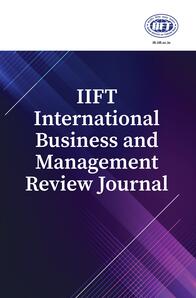
1 Textile Design Department, National Institute of Fashion Technology, New Delhi, Delhi, India
2 Knitwear Design Department, National Institute of Fashion Technology, New Delhi, Delhi, India
3 Department of Fashion Technology, National Institute of Fashion Technology, Hauz Khas, New Delhi, Delhi, India
4 Textile Design Department, National Institute of Fashion Technology, Kolkata, West Bengal, India
Creative Commons Non Commercial CC BY-NC: This article is distributed under the terms of the Creative Commons Attribution-NonCommercial 4.0 License (http://www. creativecommons.org/licenses/by-nc/4.0/) which permits non-Commercial use, reproduction and distribution of the work without further permission provided the original work is attributed.
Kota Doriya is a fabled woven fabric originating from India. It has a unique weave structure and is woven using a technique which makes it different from the rest. This research aims to document the journey of the magical Kota Doria which is disguised in mystery and folktales. The woven Kota Doriya has been awarded the Geographical Indication tag by UNESCO in July 2005. This article elucidates on the techniques adopted by the weavers, which makes the Kota fabric a unique fabric and a testimony to the superior weaving traditions of India. The ‘Ansari’ Muslim community of the Hadauti region largely practices this weaving apart from other regions like the Bundi and Baran districts of Rajasthan. With the large-scale advent of the mechanised loom and synthetic yarns, cheaper imitations of Kota have posed a serious threat to the survival of this craft. Through this research, the timeless Kota fabric will be studied and the current trials and challenges will be assessed. This study is conducted through a combination of secondary, as well as, primary research methods including a case study on the master craftsman of Kota Doriya weaving.
Kota Doriya, yarns, traditional weaving, checks, sustainability, geographical indication (GI)
Chaudhary, K. (2016, April). Value addition of the Kota Doria through designing techniques. International Journal of Textile and Fashion Technology, 6(2), 2250–2378. https://www.researchgate.net/publication/329091395
Hada, J. S., & Kumar, I. (2014). Hand crafted elegance Kota Doria. Fiber2Fashion.
Luniya, V., & Agarwal, S. (2012). Traditional Kota Doria saris—An innovative allure. Asian Journal of Home Science, 7(1), 10–13. https://researchjournal.co.in/upload/assignments/7_10-13.pdf
Rana, A. H. (2020). Fusing traditional techniques: Sustaining and reinventing traditional textiles. AICTE sponsored international E-conference. Enhanced Research Publication, India.
Robertson, A. F. (1950). Air porosity of open-weave fabrics* part I: Metallic meshes. SAGE Journals, 20(12). https://doi.org/10.1177/004051755002001203
Sanadhya, G., & Rehman, N. (2016). Income generation methods and saving pattern adopted by Women entrepreneurs of Kota district. The Journal of Rural and Agricultural Research, 16(1), 21–24. https://jraragra.in/Journals/2016Vol1/vol6.pdf
Tariq, S. (2022, December). Fabric weaves. https://sewguide.com/fabric-weaving-types/:https://sewguide.com/fabric-weaving-types/
vintagefashionguild. (2012, July 8). Lightest open weave or sheer fabrics. vintagefashionguild. org:https://vintagefashionguild.org/lightest-open-weave-or-sheer-fabrics/